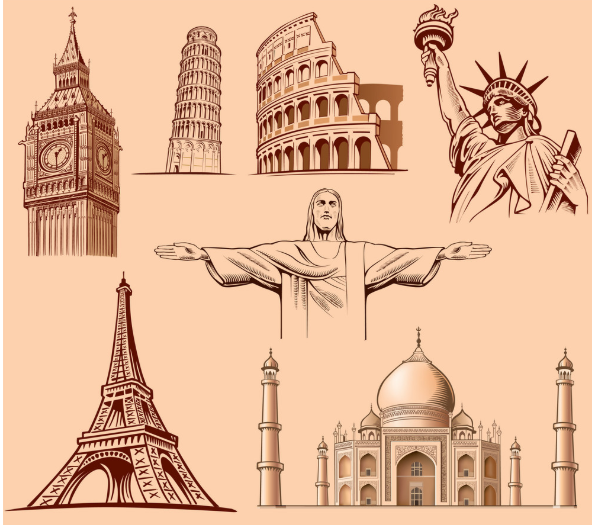Famous Places
COLOSSEUM
The Colosseum is the largest amphitheatre (meaning “theatre in the round”) in the world! The Colosseum was built between 72 AD and 80 AD under Emperor Vespasian, in the heart of Ancient Rome. Made from stone and concrete, this magnificent monument was built with the manpower of tens of thousands of slaves. Colosseum was built of stones and concrete. It had four main floors with eighty arches each. The Colosseum is an iconic symbol of Rome’s cultural and historic significance. It is one of the most visited sites in Italy. Hundreds of thousands of tourists come to visit the Colosseum annually.
THE TREVI FOUNTAIN
The fountains of Italy were built to show the people of Rome where the freshwater supply was located. The Trevi Fountain construction first started in 1730. The water finally came out of the fountain for the people in 1743, and the fountain was completed in 1762. It took a total of 32 years, from start to finish, to build. Today, the water is recycled, so you cannot drink out of the fountain (like the original Romans). The legend says that one who throws a coin in the fountain shall one day return to Rome.
THE SPANISH STEPS
The Spanish Steps are a set of steps in Rome, Italy. The Spanish Steps were built in 1723-1725 by a design of the rather little known architect Francesco de Sanctis and were financed by French diplomat Étienne Gueffier. It was built in order to link the Spanish Embassy (the primary site of Spain’s influence in Rome) and the Trinita dei Monti Church (under the patronage of the King of France). The Spanish embassy was located in the plaza at the base of the steps, so the plaza became the Piazza di Spagna (“Spanish Square”). The name then carried over to the steps. This beautiful place is not only one of Rome’s most popular gathering places, but the steps are also one of the longest and widest staircases in all of Europe.

